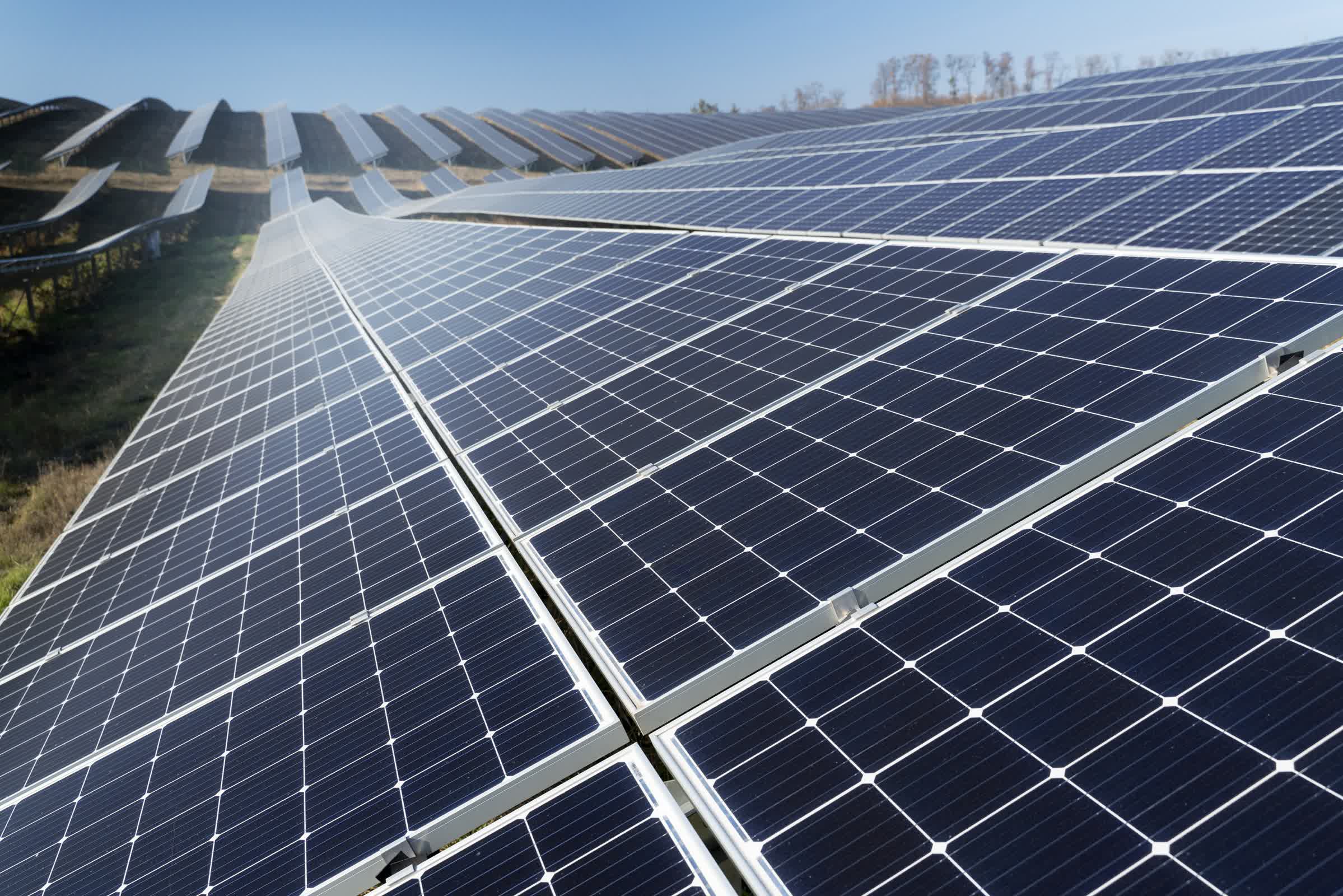Forward-looking: A team of German researchers from Martin Luther University Halle-Wittenberg has unveiled a significant advancement in solar energy technology, revealing a method to dramatically increase the amount of electricity certain materials can generate when exposed to light. Their approach involves stacking ultra-thin layers of different crystals in a precise sequence, resulting in a solar absorber that far outperforms traditional materials.
At the core of this discovery, published in Science Advances, is barium titanate (BaTiO₃), a material known for its ability to convert light into electricity, though not very efficiently on its own.
The scientists found that by embedding thin layers of barium titanate between two other materials – strontium titanate and calcium titanate – they could create a structure that produces significantly more electricity than barium titanate alone, even while using less of it.
The headline is misleading (not ops fault). They generate 1000x more with a special procedure compared to not using their procedure.
But this comparison is within material and not against typical silicium photovoltaics
and this is a 2025 article about a 2021 paper, other news outlets have published this before with similar title, giving me the deja vu
Thanks for the clarification
ty sir. Doing the devils details.
As [email protected] pointed out, this 1000-fold increase is compared to barium titanate by itself, not to standard silicium solutions. However, it’s still worth pointing out:
Panels made with this technology could be much more efficient and require less space than current silicon-based solar cells,
(…)
The material is also simpler to manufacture and more durable, as it does not require special packaging.That is a super misleading headline. What’s the efficiency improvement over existing technology, instead of raw barium titanate?
One thousand fold. Clearly 1000x more efficient right? …….right!?
Notably absent from this article: conversion efficiencies and W/m2 density
To build the new material, the team used a high-powered laser to vaporize the crystals and redeposit them in layers just 200 nanometers thick. In total, they created a structure consisting of 500 stacked layers.
Always comes down to how fast you can manufacture ideas like this.
Vapor deposition can make films pretty easily. Whether the material wants to participate in that process is another matter.
At the core of this discovery, published in Science Advances, is barium titanate (BaTiO₃), a material known for its ability to convert light into electricity, though not very efficiently on its own.
I was just watching a presentation on cooling paints and Barium seems to be relevant there: Revolutionary Paint: How to Make Surfaces Stay Cool in the Sun - YouTube
Gas industry execs just called their resident hitman.
Reminds me of this graph with growth of solar energy output and projected growth of output. It’s just exponential on top of exponential.
So … Hypothetically speaking … Enhance all current solar panels with this technique and have more solar production than all other power sources combined? Just asking. Didn’t do any math.
Of course not. You can only harvest all of the solar radiation. Currently you capture round about 20%. The 1000x claim is misleading and you know it.
They just stacked a lot of layers. Photovoltaics occur in boundary layers.
Thank you for that insight, although
The 1000x claim is misleading and you know it.
No, that’s an assumption. I did not know. That’s why I said hypothetically speaking and … Did not so the math.
Turn of phrase, sorry.
No worries 😊
I always knew lasers were awesome









